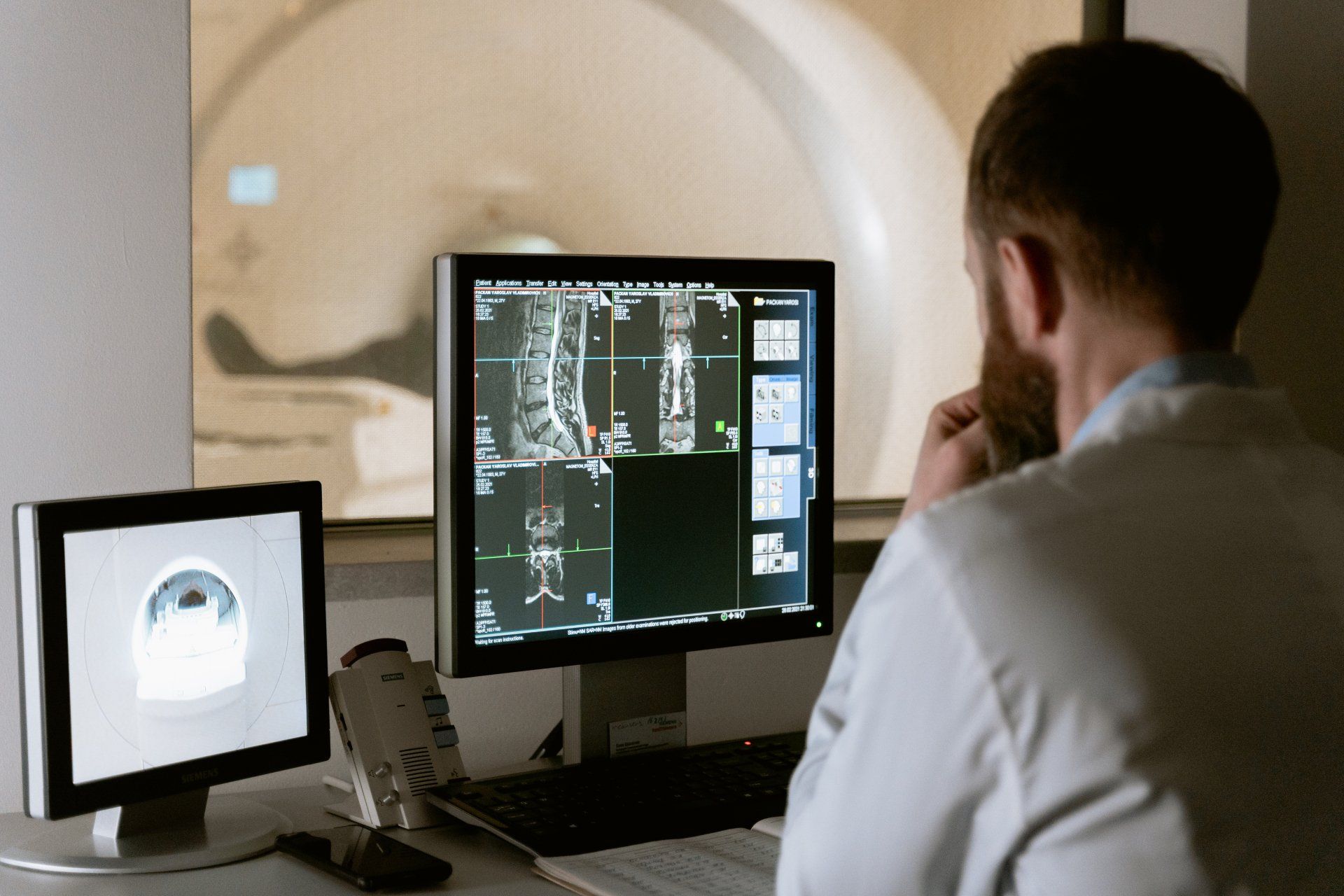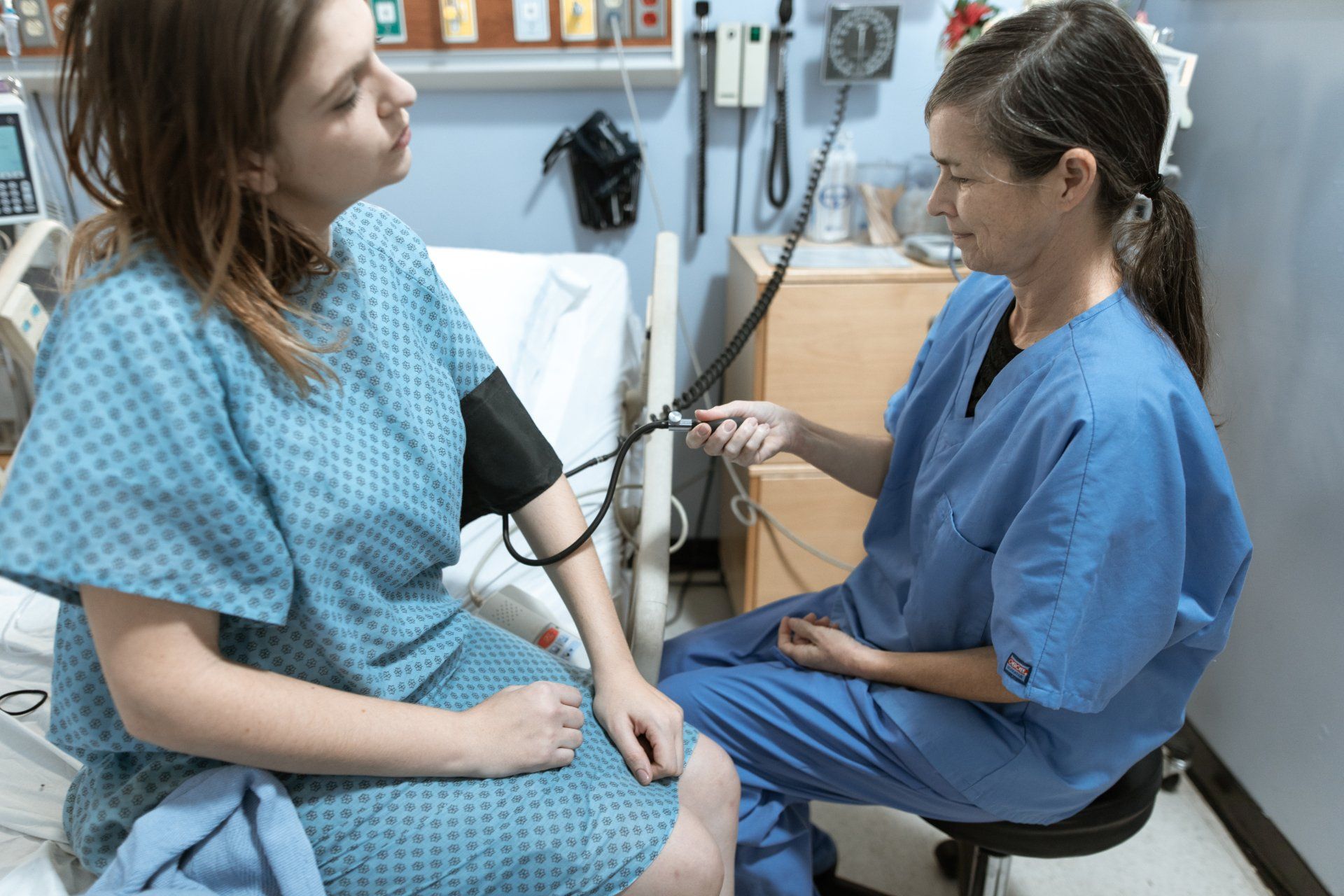CT Scans and PET Scans
CT Scans and PET Scans
written by
Katherine Garner

PET and CT scans are both important imaging tools, but you might not know the differences between them. This article will explain what PET and CT are, how they produce images, and in which situations each scan may be used.
What are PET and CT?
PET and CT stand for Positron Emission Tomography and Computed Tomography, respectively. Tomography - with roots in the Greek tomos, meaning ‘section’ or ‘slice’ - is the process of imaging the inside of the body in a series of cross-sectional slices. These slices are digitally stacked to recreate a three-dimensional image of the patient, organ, or tissue. PET and CT both create these slices, but they use different technologies to do so, providing different medical information as a result.
CT uses x-ray radiation to image the inside of the body. In a CT scanner, the patient is flanked by an x-ray beam on one side, and a detector on the other. Unlike a conventional x-ray, CT is three-dimensional: the x-ray beam and detector rotate around the patient to capture the same section from different angles. The amount of x-ray radiation which reaches the detector depends upon the density of the body part it is passing through. By analysing the amount of radiation detected at different positions in the rotation around the patient, a computer programme can reconstruct an internal image of the body.
Like CT, PET is a three-dimensional scan. Instead of using energy from x-rays, a PET scanner detects tiny spikes of radiation produced by positrons. Positrons are small particles which are given off when an injected radioactive drug, called a radiotracer, decays over time. When these positrons collide with body tissue, they produce spikes of radiation. The scanner detects these spikes and converts them into an image showing where the radiotracer has accumulated.
PET radiotracers are often radioactive versions of substances used by the body, such as sugar, amino acids, or ammonia: this enables them to be taken up or used by different tissues. Different radiotracers are designed to accumulate in different tissues and cause them to become visible to the scanner.
The most commonly used radiotracer in oncology is a sugar called [18F]-fluorodeoxyglucose, or [18F]-FDG. Cells can take up natural sugars like glucose and break them down for energy, so they can take up [18F]-FDG too. However, this sugar is chemically modified so that it cannot be broken down and accumulates in the cell. Very energy-intensive cells which use lots of glucose, like cancer cells, will also accumulate more [18F]-FDG than other cells. This makes tumours appear as activity ‘hotspots’ on the PET scan.
What information can PET and CT tell us?
By using different radiotracers, PET can be tailored to show different information about the patient. We have talked about the tumor radiotracer [18F]-FDG, but there are many others:
- Choline is a nutrient which participates in the production of new cell membranes. Areas where many new cells are being produced, such as tumors, will therefore take up more choline than normal cells. Radiolabeled choline can be more accurate than [18F]-FDG when imaging tumors in energy-intensive organs like the brain.
- [82Rb]-Rubidium chloride is absorbed from the blood very effectively by cells in the heart muscle (myocardium). It can therefore be used to identify areas of the heart which are not receiving enough blood; this is called a myocardial perfusion scan.
- [18F]-Sodium fluoride is a salt which is used to image bone diseases. It adheres to the outer layer of the bones, acting similarly to the protective coating that fluoride toothpaste forms on teeth.
CT is used to obtain realistic images of the internal organs. Unlike a normal two-dimensional x-ray, CT offers precise spatial information which may be required in certain cases. It offers a non-invasive way to identify sites of damage after a major traumatic injury, for example, and shows soft tissues better than a normal x-ray. CT can be combined with further contrast-enhancing agents, for example intravenous dyes which make blood vessels more visible in the scan; this can be used to locate abnormalities like aneurysms or blood clots.
In some cases, both PET and CT may contribute different useful information, and in this case a combined PET-CT may be used.
Who can have a CT or PET scan?
Unlike Magnetic Resonance Imaging (MRI), both PET and CT are safe for use in patients with pacemakers or metal implants. However, radiation dose is an important safety consideration.
Radiotracers are considered safe because they lose their radioactivity rather quickly; this is why they are injected into the patient no more than an hour before a PET scan. The radiotracer is degraded and flushed out of the body within a few hours.
Researchers have estimated that a whole-body combined PET/CT scan exposes the patient to a dose of around 12 millisieverts, which is three times the yearly radiation exposure of the average person (a useful visualisation of these doses can be found here). Hence, the use of these procedures is not a decision to be taken lightly. The safety of PET and CT may be improved further using technologies which reduce the required radiation dose, such as machines with image enhancement algorithms.
Usually, PET and CT are avoided in pregnant women and babies as a precautionary measure. In some cases, however, they might be necessary, for example to locate a tumor for treatment which could negatively affect the pregnancy if left untreated. Locating the tumor by PET or CT exposes the fetus to radiation, but the risk to mother and child of leaving the tumor untreated might be far greater.
Summary
- CT and PET are both types of tomography – an imaging method which constructs 3D images of the body from a series of "slices".
- CT provides anatomical images of the body, whereas PET provides information about the activity and function of different tissues.
- Each scan uses a form of radiation. CT uses external X-rays which are passed through the patient, whereas PET uses radiotracers which can be taken up by different tissues in the body.
Sources
CT Scan - National Health Service
How Does it Work? Positron Emission Tomography - British Medical Journal
PET Scan - National Health Service
Myocardial Perfusion Scan - StatPearls
Clinical PET Imaging in Prostate Cancer - RSNA Radiographics
Katherine is currently completing a Masters by Research in Cancer Biology at Imperial College London. She is enthusiastic about science communication and is a contributor to both of the College’s science magazines, I, Science and Broadsheet, where further examples of her writing can be found. She can be contacted on LinkedIn.
Thank you for reading Patient Education Essentials, the Write Shift RN blog.
Disclaimer: This article was written as a guest post for Write Shift RN LLC's blog. The information in it may not be wholly fact-checked or edited, allowing the reader to see the writer's work and skills firsthand.
This information is not intended as medical advice. It is for informational and educational purposes only. Always talk to your doctor or other qualified healthcare providers about any questions or concerns you may have regarding medical conditions.











